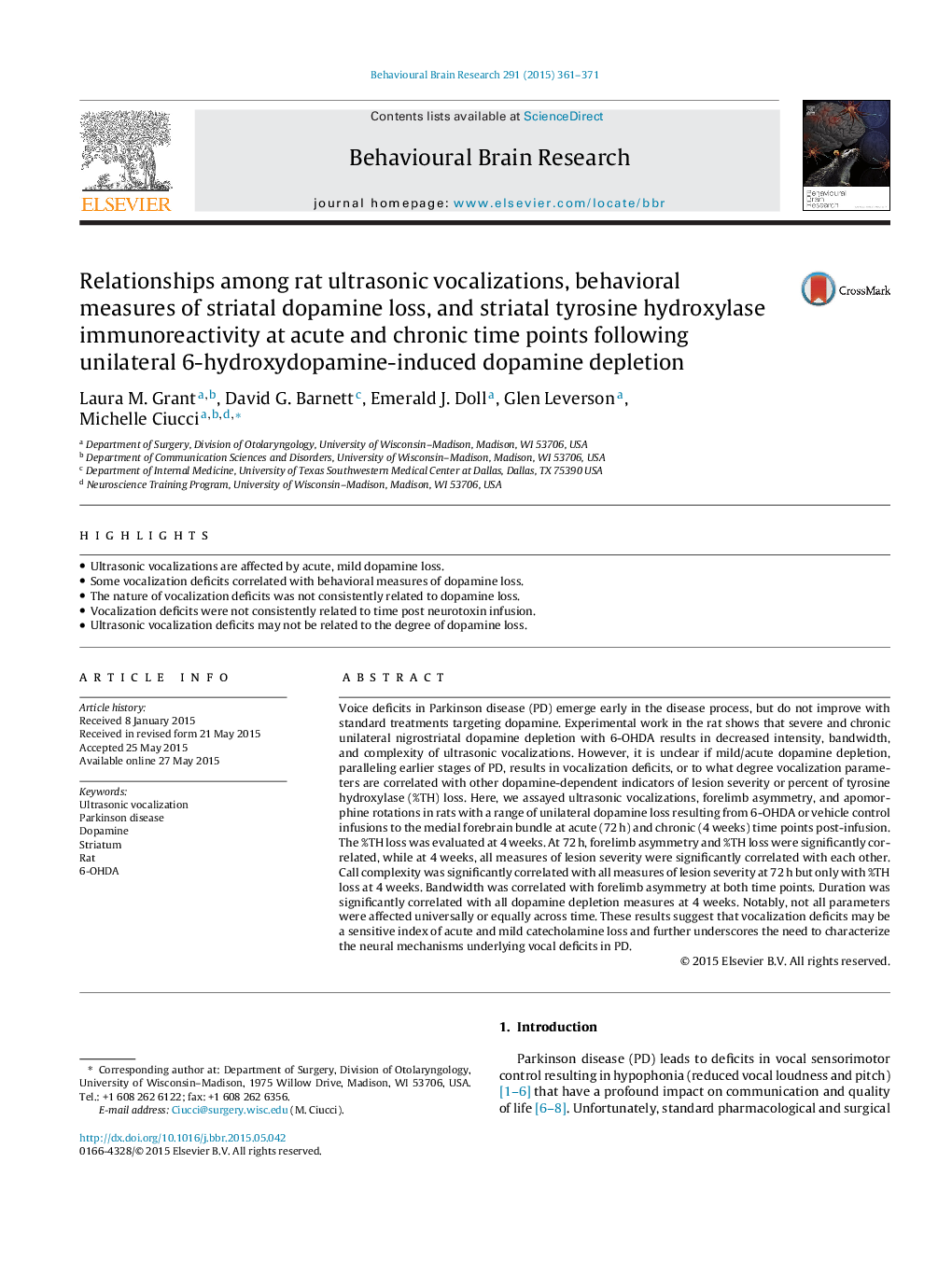| کد مقاله | کد نشریه | سال انتشار | مقاله انگلیسی | نسخه تمام متن |
|---|---|---|---|---|
| 4312407 | 1612941 | 2015 | 11 صفحه PDF | دانلود رایگان |

• Ultrasonic vocalizations are affected by acute, mild dopamine loss.
• Some vocalization deficits correlated with behavioral measures of dopamine loss.
• The nature of vocalization deficits was not consistently related to dopamine loss.
• Vocalization deficits were not consistently related to time post neurotoxin infusion.
• Ultrasonic vocalization deficits may not be related to the degree of dopamine loss.
Voice deficits in Parkinson disease (PD) emerge early in the disease process, but do not improve with standard treatments targeting dopamine. Experimental work in the rat shows that severe and chronic unilateral nigrostriatal dopamine depletion with 6-OHDA results in decreased intensity, bandwidth, and complexity of ultrasonic vocalizations. However, it is unclear if mild/acute dopamine depletion, paralleling earlier stages of PD, results in vocalization deficits, or to what degree vocalization parameters are correlated with other dopamine-dependent indicators of lesion severity or percent of tyrosine hydroxylase (%TH) loss. Here, we assayed ultrasonic vocalizations, forelimb asymmetry, and apomorphine rotations in rats with a range of unilateral dopamine loss resulting from 6-OHDA or vehicle control infusions to the medial forebrain bundle at acute (72 h) and chronic (4 weeks) time points post-infusion. The %TH loss was evaluated at 4 weeks. At 72 h, forelimb asymmetry and %TH loss were significantly correlated, while at 4 weeks, all measures of lesion severity were significantly correlated with each other. Call complexity was significantly correlated with all measures of lesion severity at 72 h but only with %TH loss at 4 weeks. Bandwidth was correlated with forelimb asymmetry at both time points. Duration was significantly correlated with all dopamine depletion measures at 4 weeks. Notably, not all parameters were affected universally or equally across time. These results suggest that vocalization deficits may be a sensitive index of acute and mild catecholamine loss and further underscores the need to characterize the neural mechanisms underlying vocal deficits in PD.
Journal: Behavioural Brain Research - Volume 291, 15 September 2015, Pages 361–371